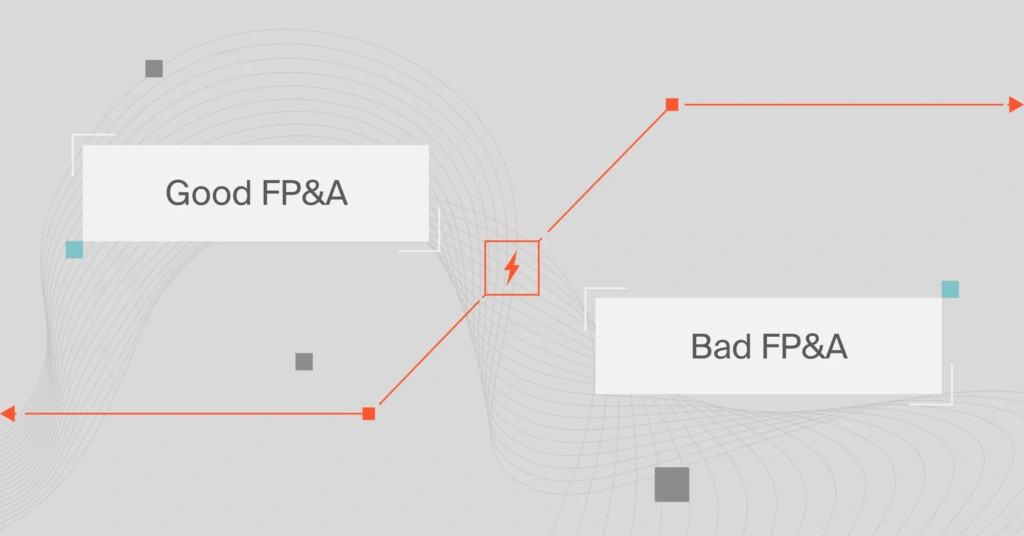Financial planning and analysis is becoming an increasingly strategic part of a SaaS organization. The role of finance is no longer about just taking inputs and calculating how they affect financial plans, but about driving business outcomes through effective financial planning.
There is a popular Andreessen Horowitz article titled “Good Product Manager/Bad Product Manager” that showcases best practices compared to worst practices. Inspired by that article, we’re going to share FP&A best practices and worst practices in the framework of a good FP&A and bad FP&A.
Read on to find five things a good FP&A person does — as well as examples of things they definitely don’t do.
FP&A Best Practices
1. Ensure access and collaboration
Good FP&A means making sure your financial plan doesn’t exist within a silo.
It should be easily shareable with the appropriate members of your team, especially those who have contributed to the plan or will be impacted by the plan. This helps foster an organization-wide ROI mindset, in addition to making sure each department has a clear understanding of where they fit in achieving company goals.
While there may be some concern around confidentiality (because of sensitive or proprietary information), cloud-based tools make it possible to grant access to specific parts or tabs in documents without sharing the plan in its entirety.
Bad FP&A creates a plan in Microsoft Excel and stores it in the finance shared drive, making it accessible to the finance team only.
This leaves other departments, such as engineering, blind to the financial plan (aside from receiving quarterly or biannual updates), and makes it difficult for them to make informed business decisions, see how they’re performing, or know about upcoming budget changes.
Here are a few tactical ways finance and engineering can create better alignment on spend.
2. Create an inclusive planning process
Good FP&A happens when financial planning and operational planning go hand in hand. Numerous departments work together during the planning process and the relevant parties validate certain parts of the plan before it is complete, providing input as necessary. As a result, all departments are on the same page, aware of how they affect the future goals of the organization.
It’s important for anyone that touches the budget to be part of the planning process.
Bad FP&A produces financial plans in isolation, only approaching other departments once the plan is complete. Engineering, marketing, and other departments are separated from (and ignorant of) the planning process. This often results in large budget variances as finance isn’t privy to the operational plans of each department.
3. Educate business partners and translate financial concepts
Good FP&A means knowing that spreadsheets are not for everyone. One of the best FP&A skills a financial planner can have is the ability to translate numerical data into qualitative analysis — or provide context and story behind the numbers.
For example, if the engineering budget has decreased by 50% one month, it’s not enough to just send the spreadsheet over to the CTO without any context.
Good financial planning means discussing the reason for the decrease beforehand.
Bad FP&A means transmitting spreadsheets or PDFs to stakeholders without providing any story around the numbers. They expect other departments to understand the numbers and the reasoning behind them without having any background information.
4. Create actionable KPIs
Good FP&A produces targets that are actionable and achievable.
It’s not enough to say you want 20% month-over-month growth without explaining the strategy that makes it possible. Will you increase the marketing budget so the marketing team can increase their ad spend, for example?
Good FP&A practitioners understand that operational planning and financial planning are interrelated, and that the best way to meet the executive team’s expectations is by ensuring KPIs are future-looking, realistic, and attainable.
Bad FP&A is not concerned with producing any actionable strategies to achieve identified goals. It also doesn’t take evolving needs into consideration. Sometimes forces outside your control, such as market and economic trends, change the trajectory of the business. FP&A needs to adjust KPpubIs accordingly.
5. Foster a culture of test, measure, and improve
Good FP&A educates and encourages all departments to embody a culture where testing, measuring, and improving upon budgets is the norm.
Financial planners are not just measurers. They need to process and analyze data, then provide explanations and make recommendations to their business partners — such as walking through a budget to discuss the ROI on different areas of investment.
Bad FP&A views the financial plan from a punitive standpoint, only seeing the shortcomings of current performance. It doesn’t involve asking questions, investigating why a certain budget didn’t work, or applying insights to future budgets.
Reach Your FP&A Goals With CloudZero
It can be tempting to keep your financial plan close to your chest, but working in a silo is never the answer.
To build a level of trust with your team, you need to openly collaborate and educate. You can be a strategic advisor to the business rather than just a human calculator.
Having the right tools helps your organization to understand the story behind the numbers and create a more accurate financial plan.
To elevate one aspect of your cloud financial planning and analysis, try CloudZero, the cloud cost intelligence platform that helps every department see how the decisions they make impact cloud spend.









